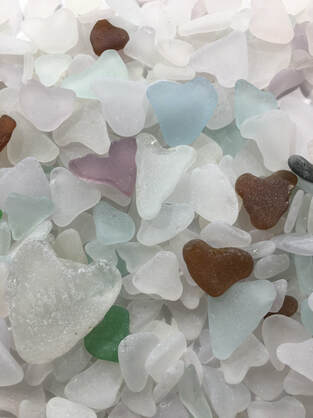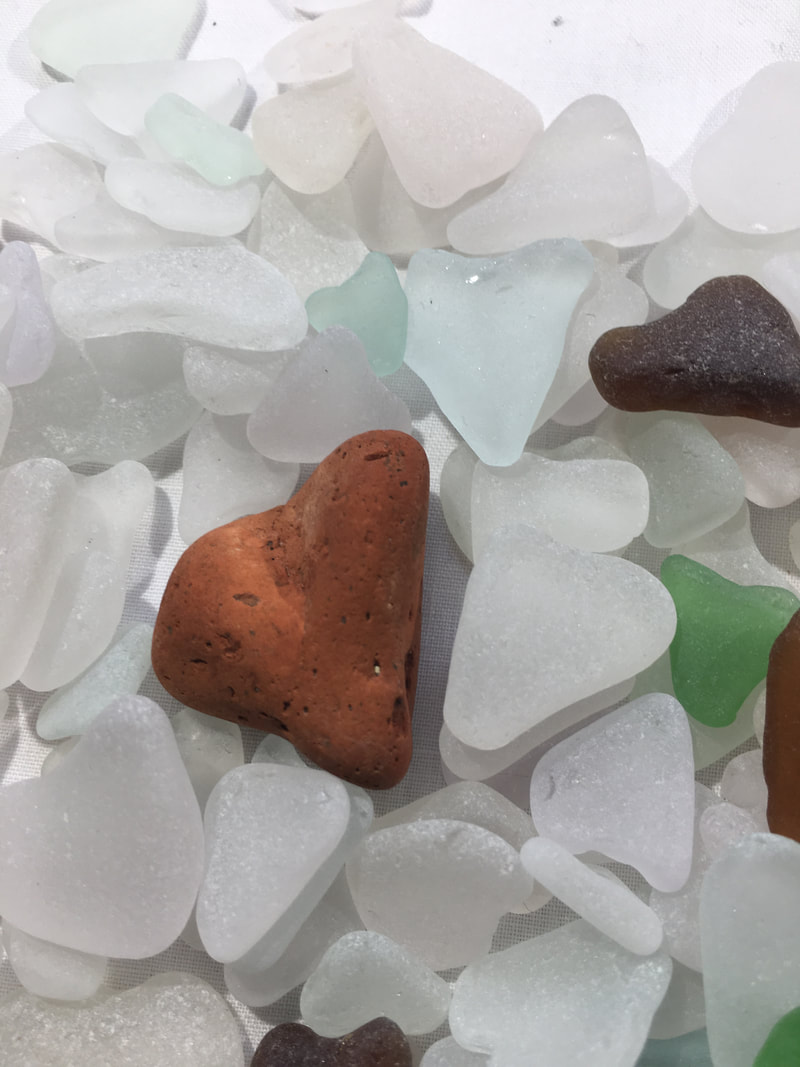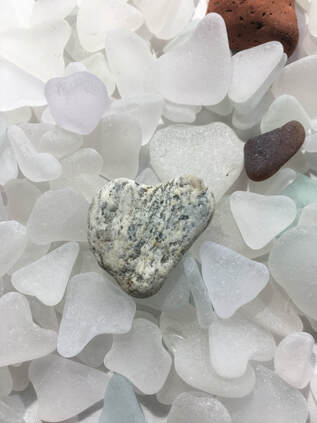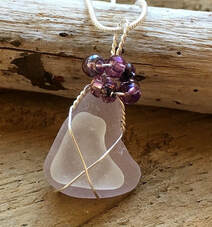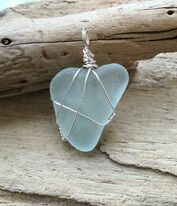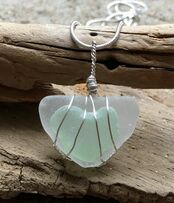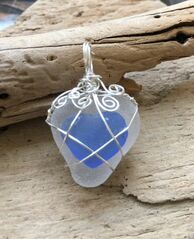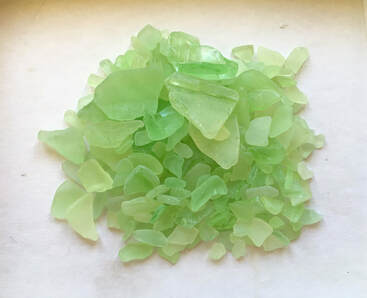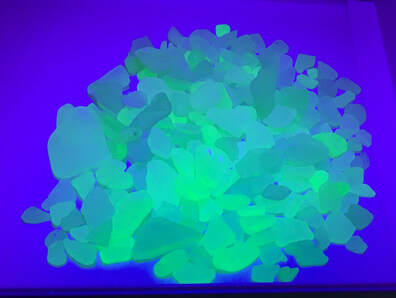|
2/18/2019 2 Comments The Heart of the MatterWith Valentine's Day last week, I've been thinking a lot about hearts. It never ceases to amaze me when that nature makes perfect sea glass hearts and I'm blessed to have a large collection of them. Besides sea glass hearts, I have some stone, coral and even a brick heart. So how does nature make heart shapes? First, a word about how sea glass is made. Wikipedia says: Naturally produced sea glass ("genuine sea glass") originates as pieces of glass from broken bottles, broken tableware, or even shipwrecks, which are rolled and tumbled in the ocean for years until all of their edges are rounded off, and the slickness of the glass has been worn to a frosted appearance. (See more on this at https://en.wikipedia.org/wiki/Sea_glass) To make hearts - or triangles, which are more plentiful than hearts - it begins with the broken glass itself. When glass in the ocean is broken against a rock or other object, the point of impact radiates out from a central point. This creates one point of a triangle shape. This process is repeated for the other sides of the triangle. (More on triangle shaped sea glass later...) A heart shape occurs when one of the flat sides of the triangle becomes chipped. After decades of tumbling in the rocks, surf and sand, a sea glass heart is formed. You can see that some of my sea glass hearts are very clearly a heart shape, while others are more subtle, with just a suggestion of a heart. I love using hearts in my jewelry and here are a few of my favorites: You'll notice that I often place a sea glass heart onto a larger piece of sea glass as an accent piece. That's so I can use hearts that may be too small to be a piece of jewelry on their own. Sometimes simple is best, like the center photos and other times I like to add beads or intricate wrapping.
The next time you see a sea glass heart, you won't have to wonder how it's made because now you know.
2 Comments
1/22/2019 2 Comments Ultra Violet (UV) Sea GlassBev recently received a black light from a fellow sea glass fanatic and has been going through all of her sea glass to find the UV glass pieces. You can't imagine her excitement when she found several pieces. It was a treasure hunt in her sea glass studio!
As you can see, the photo on the left is a pile of light green sea glass. On the left is the same pile under the blacklight. How does this happen? According to Google: Both green Depression glass and Vaseline glass will glow under a black light due to the uranium oxide content in the glass. Old Burmese glass fluoresces a similar yellow-green color. American colorless pressed glass made before 1930 is said to fluoresce yellow, while reproductions generally do not. Uranium oxide? Isn't uranium dangerous? Here's an article from Beach Combing Magazine written by Kirsti Scott. She explains: Uranium glass is the most common ingredient in UV glass. There are several types of glass that were made with uranium in them. Yes, the same uranium used for bombs and nuclear power reactors. Fortunately, the amounts used to make uranium glass are tiny. Vaseline glass, or Canary Glass, is a yellow-green glass mainly produced for tableware and household items from around 1840 up until World War II. It gets its yellow or greenish-yellow color from uranium dioxide (UO2), which was used as a colorant. Vaseline glass came as glasses, plates, lamps, doorknobs, bottles, decorative items, decanters, and more. The uranium in Vaseline glass gives it the glass its bright-green color in natural light, and causes the glass to glow vivid neon green under a black light. Other types of uranium glass, which also glow under UV light, include opalescent green uranium glass, teal carnival glass, milk glass, opaque custard and Burmese glass, opaque or semi-opaque jadeite glass, and transparent or semi-transparent pale-green Depression glass. Uranium glass was also used in marbles to create swirls of bright colors, so your sea marbles may glow under a black light, too. During WWII, the U.S. confiscated all uranium, and prohibited the use of uranium for glass production. After the war, production resumed, though a lower-grade, less-fluorescent version of uranium was used and only limited quantities are produced today, mostly for novelty or decorative pieces. No more place settings of uranium glass produced these days. A property of uranium—totally unrelated to its fluorescence—is its radioactivity. The radioactivity of uranium glass is actually measurable with a Geiger counter. However, since only small amounts of uranium, often less than 1%, were used during the manufacture of the glass, the amount of radioactivity in uranium glass is not considered harmful. And, the radioactivity doesn’t leak out quickly into liquids stored in a uranium glass container, so it’s safe to use. Maybe if you ground the glass into powder and swallowed the results it might be unhealthy, but the most dangerous part of dealing with uranium glass is actually using the black light, which emits ultraviolet rays. (Safety note: Never look directly into a UV flashlight, don’t shine it into anyone else’s eyes, and if you’re particularly worried about UV exposure, wear UV protective glasses.) So there you have it. The uranium in the glass won't hurt you but the black light could. Stay safe people. |
AuthorLoie writes the blog with lots of input from Bev. Archives |
BeLo The Sea Treasures
Copyright © 2018
Copyright © 2018
Proudly powered by Weebly

